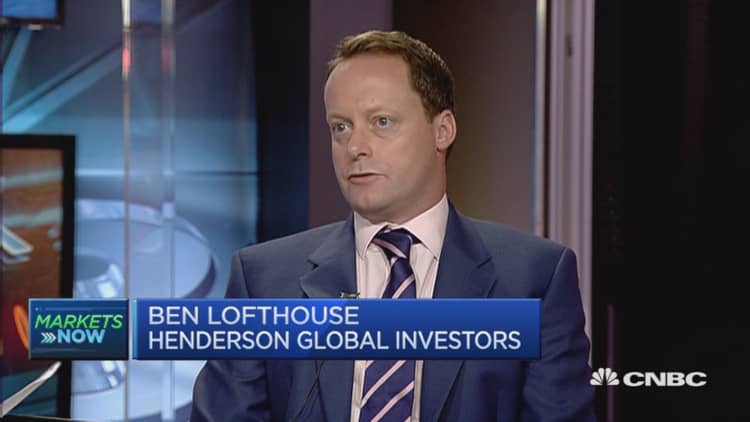
European dividend payments rose in the second quarter, with banks in France and the Netherlands posting big increases. However, with a cloud hanging over Europe's still-challenged banking sector, analysts are asking whether lenders should be delivering dividends at all.
Dividends — the bit of a company's earnings they want to share with stockholders — in Europe ex-U.K. were 1.1 percent higher in the second quarter of 2016 than in the same period in 2015, at $140.2 billion on a headline basis, Henderson Global Investors said in a report on Monday. This compared to average global dividend growth of 2.3 percent.
Dividends in Europe's financial sector diverged, with French and Dutch banks delivering big increases and those in Germany, Spain and Belgium making steep cuts. French and Dutch banks helped make dividend growth in France and the Netherlands respectively second- and third-fastest in the world in the period, according to Henderson. The fastest overall was South Korea.
"The banks are boosting and the regulator has clearly approved this, but does this make sense?" Sean Corrigan, consultant at Hinde Capital, asked on CNBC on Monday.
"I mean, the one weak sector, the dragging limb in Europe, is the banking sector and the financial sector in general and the weakness that it labors under. Should they paying dividends out all? Certainly not increasing them," he added.
French banking giants BNP Paribas, Credit Agricole and Societe Generale increased their dividend distributions by between 50-70 percent, according to Henderson.
However, SocGen was highlighted as a bank that might struggle after a hypothetical adverse shock in the European Banking Authority (EBA)'s latest stress tests. In the scenario study, Societe Generale's transitional fully-loaded common equity capital ratio – a key measure of a bank's ability to withstand shocks — would fall to 8.03 percent, making Societe Generale the 10th most vulnerable of the "systemically important" institutions covered.
Nonetheless, Ben Lofthouse, co-manager of global equity income fund at Henderson Global Investors, told CNBC the problem facing European banks was largely one of investors 'perceptions.
"The banks are telling people they think they are healthy and the regulators think they are healthy, but unfortunately, the market is not buying that, particularly with some of the macro things going on and the low interest rates caused by central bankers," Lofthouse told CNBC on Monday.
ING, Netherlands' biggest bank by assets, more than tripled the distribution of its dividend. This added an extra $1.3 billion year-on-year. Its 2016 interim dividend stood at 0.24 euros (27 U.S. cents) per ordinary share.
Dutch insurance group NN also upped the total distribution of its dividend by almost three-quarters, Henderson said.
Meanwhile, HSBC Holdings was the world's third-biggest dividend payer in both the second quarter of 2015 and the second quarter of 2016, according to Henderson. The U.K.'s biggest bank by assets will pay an interim dividend of 10 cents per ordinary share on September 28.
However, Deutsche Bank, which was the only German bank singled out in the EBA's recent stress tests, has cancelled its dividend.
"I think the real question (for banks) is whether the capital is sufficient. So the market thinks it is not and thinks they would be better just bolstering the capital, but the companies themselves are saying 'we have raised a lot of capital in recent years,'" Lofthouse told CNBC.

